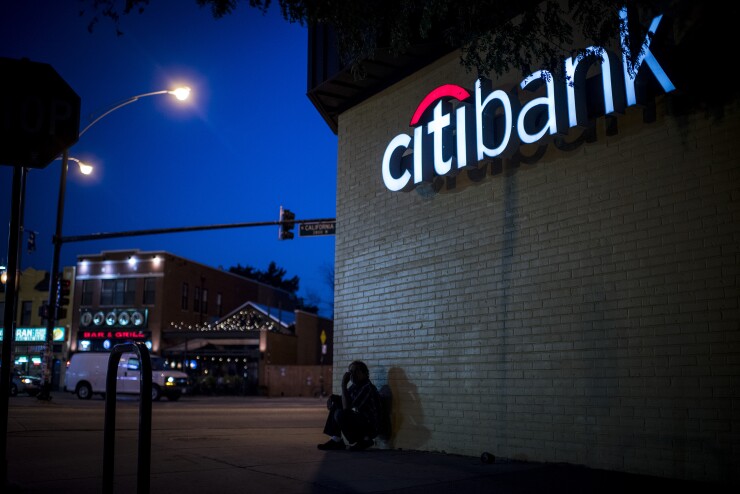Billions of dollars in investments are pouring into digital payments, but the hefty numbers obscure a regulatory and competitive squeeze that could shut banks out of the profits for good.
Citi’s Treasury and Trade Solutions will build a new business line that expands beyond B2B into merchant acquiring, with a focus on cross-border payments. It's following a wave of activity that has so far been dominated by tech firms.
This same market opportunity is behind
Simply put: The payment is a portal to other revenue-generating services more than a stand-alone product. Whoever controls the portal controls the relationship.

"There's clearly a need for cross-border commerce and it's likely that most businesses would be able to use Citi's commercial banking services, and ultimately its consumer offerings as well," said Thad Peterson, a senior analyst at Aite. "But payments, particularly cross-border payments, are growing fast and there are several companies that specifically focus on cross-border acquiring."
Global payment revenues are on pace to reach $2 trillion in yearly volume in 2020 and $3 trillion by 2022, according to
Citi is playing to its strengths to compete in this environment. Citi has already upgraded its competitive B2B payments business to blunt the impact of fintechs and innovations such as blockchain, which have upended traditional bank control over international payments.
Citi wants to use this B2B strength to serve multinational companies that are trying to digitize as well as digital commerce shoppers and sellers that want to sell globally with a single consumer payment gateway.
The bank can also pull more revenue from merchant acquiring, a business that’s become less profitable in recent years, by tying merchant acquiring to other financial services.
"While Citi clearly has the global reach needed to be competitive, the question is whether it has the alacrity and flexibility to move quickly and compete head on with the fintechs," Peterson said.
Whichever company controls the enrollment is best positioned to monetize the transaction data. So Citi is counting on its heft to seize turf in a market that has already been staked out by large tech firms and startups.
For scale, Citi will work with Mastercard Payment Gateway Services, which is integrated with acquirers and digital wallets globally. The bank has also made connections with instant payment programs in more than 20 countries, including the U.K.’s Open Banking Scheme. Mastercard’s service has integrations with more than 180 acquirers.
“Citi has long had a leading multinational treasury and B2B payments business serving large corporates, often with complicated global supply and distribution chains,” said Eric Grover, a principal at Intrepid Ventures. “Leveraging its payments gateway enriches its service, enables acceptance of an array of traditional and alternative payment systems and open banking payments.”
McKinsey reports banks are counting on payments for more than 30 percent of their overall revenue, after a long period in which that percentage was at or below 30 percent. Also, a low interest rate environment in most global markets and the explosion of more nimble fintechs are pressuring fee income — and forcing banks to “continually refresh” innovation in payments, according to McKinsey.
Many of these fintechs, such as Stripe and Square, are popular with investors.
Citi and Mastercard did not provide comment by deadline. Their new business line also has a regulatory side, as PSD2, a European rule, pushes open banking standards globally.
“Citi is starting to be willing to act as a payments hub, linking a host of payment systems and acquirers worldwide,” Grover said. “It should thereby provide better coverage, capturing more payment volume from existing clients, making the business a bit less fee sensitive, and bolster its position relative to a burgeoning field of bank and nonbank payment providers.”





